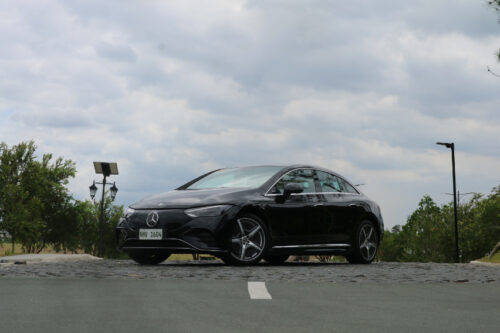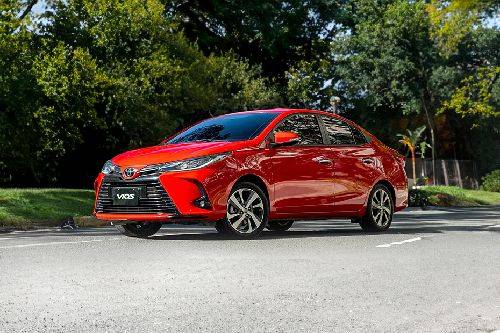Off the Beaten Path: Everything You Need to Know About Off-Road Driving in the Philippines

- KEY TAKEAWAYS
- The growing off-road driving culture in the Philippines
- Essential off-road driving equipment and vehicle preparation
- Choosing the right off-road vehicle
- Must-have equipment for off-road driving
- Preparing your vehicle for off-road adventures
- Safety measures and precautions for off-road driving
- Off-road driving safety basics
- Understanding and minimizing off-road driving risks
- Tips for driving on different off-road conditions
- Driving techniques for rocky and mountainous terrains
- Tips for driving on sandy or muddy surfaces
- Handling water crossings and riverbeds
- Environmental considerations and responsible off-road driving practices
- Minimizing environmental impact and preserving natural resources
- Respecting wildlife and protected areas
- Cleanliness and proper waste disposal
- Dealing with common off-road driving challenges and emergencies
- Troubleshooting vehicle issues during off-road driving
- Handling tire punctures and repairs
- Emergency preparedness and first aid
- Final thoughts
Off-road driving offers adventure enthusiasts a unique way to explore the diverse and breathtaking landscapes of the Philippines. From rugged mountain trails to sandy beaches and muddy terrains, the country is a haven for off-road driving enthusiasts. However, engaging in off-road driving requires proper preparation, knowledge, and safety measures to ensure an enjoyable and responsible experience.
KEY TAKEAWAYS
Do I need a special vehicle for off-road driving?
Off-road driving can be done with a variety of vehicles, but having a vehicle specifically designed for off-road terrain, such as a 4x4 or an SUV, is highly recommended. These types of vehicles typically have better ground clearance, traction control, and off-road capabilities, allowing for a safer and more enjoyable off-road experience.What are some important safety measures to consider during off-road driving?
Some important safety measures to consider include wearing seat belts at all times, maintaining a safe speed, using appropriate off-road driving techniques, carrying essential safety equipment like fire extinguishers and first aid kits, and informing someone about your off-road plans and expected return time. It is also recommended to join off-road driving clubs or groups to benefit from the knowledge and experience of other off-road enthusiasts.We listed down some valuable tips, essential equipment recommendations, and safety precautions for off-road driving in the Philippines. Whether you are a seasoned off-road driver or a beginner looking to embark on thrilling off-road adventures, this guide will equip you with the necessary information to navigate challenging terrains and explore the beauty of the Philippines responsibly.
The growing off-road driving culture in the Philippines

In recent years, off-road driving has gained popularity among Filipinos. With the country's diverse landscapes, from majestic mountains to stunning coastlines, off-road enthusiasts are discovering the beauty that lies beyond the asphalt. Off-road clubs and communities have sprung up, fostering a sense of camaraderie among like-minded adventurers.
Also read: Team Ironman PH wins Petron Philippine Overland Expedition 2022
Essential off-road driving equipment and vehicle preparation
Choosing the right off-road vehicle
Before embarking on your off-road adventure, it is crucial to have the right set of wheels. A sturdy 4x4 vehicle with high ground clearance, off-road tires, and good suspension is a must. Pick a vehicle that can handle the rough and tumble of off-road terrains without breaking a sweat.
Also read: SUV vs. pickup truck: 9 arguments for choosing one over the other
Must-have equipment for off-road driving

Aside from the vehicle itself, there are a few essential pieces of equipment that you should not leave home without. These include recovery gear like a winch, tow straps, and a high-lift jack, as well as a reliable GPS device, extra fuel, and a first aid kit. It is better to be overprepared than underprepared when venturing into the unknown.
Preparing your vehicle for off-road adventures
Your vehicle also needs some TLC before hitting the off-road trails. Check and service your engine, brakes, and suspension to ensure they are in top shape. Install skid plates to protect vital components underneath, and consider adding a snorkel if you plan on tackling water crossings. Do not forget to secure loose items, such as roof racks or spare tires, to prevent any unwanted surprises mid-drive.
Safety measures and precautions for off-road driving
Off-road driving safety basics

Safety should always be a top priority when off-roading. Buckle up, adjust your mirrors, and make sure your seat is in a comfortable position. Observe speed limits, especially in unfamiliar terrains, and maintain a safe distance from other vehicles. Of course, do not forget your common sense – avoid reckless maneuvers and be mindful of your surroundings.
Understanding and minimizing off-road driving risks
Off-road driving does come with certain risks, such as getting stuck or encountering obstacles. Being prepared for these challenges is key. Learn to read the terrain ahead, identify potential hazards, and plan your route accordingly. Always drive within your skill level, and if you are unsure about the difficulty of a trail, it is better to err on the side of caution.
Tips for driving on different off-road conditions
Driving techniques for rocky and mountainous terrains
When faced with rocky and mountainous terrains, take it slow and steady. Approach obstacles at an angle to reduce the chances of getting stuck, and maintain a consistent speed to keep momentum. Be prepared for uneven surfaces and make use of your vehicle's low-range gearing and differential locks to conquer those challenging inclines.
Tips for driving on sandy or muddy surfaces

Driving on sandy or muddy surfaces is like trying to dance on a slippery floor – it requires finesse. Reduce tire pressure for better traction, avoid sudden acceleration or braking, and keep a steady momentum to avoid getting stuck. If you find yourself in a sticky situation, try rocking back and forth or digging out the sand or mud around your tires for better traction.
Handling water crossings and riverbeds
Water crossings can be both exciting and daunting. Before crossing, assess the depth and current of the water. If it seems too risky, find an alternative route. If you decide to push through, maintain a slow and steady speed, staying in the center of the track where the water is usually shallower. Once across, gently apply your brakes to dry them out and avoid any surprises.
Environmental considerations and responsible off-road driving practices
Minimizing environmental impact and preserving natural resources
As off-road enthusiasts, it is important to be mindful of our environmental impact. Stick to designated off-road trails, avoid damaging vegetation, and respect the natural habitats around you. Let's leave nothing but tire tracks and take nothing but memories, ensuring that future generations can also enjoy the beauty of these off-road destinations.
Respecting wildlife and protected areas

While off-roading, we may encounter various forms of wildlife and protected areas. It is essential to observe from a respectful distance and refrain from disturbing or feeding the animals. Remember, we are guests in their homes, and we should leave them undisturbed and unharmed.
Cleanliness and proper waste disposal
Off-road adventures can get messy, but that does not mean we should leave trash behind. Practice the "Leave No Trace" principle by packing out what you pack in. Dispose of waste properly and leave the trails cleaner than you found them. Let us show respect for the environment and make responsible off-road driving a top priority.
Dealing with common off-road driving challenges and emergencies
Troubleshooting vehicle issues during off-road driving
Off-roading can sometimes come with unexpected challenges. From mechanical failures to getting stuck in mud or sand, it is essential to be prepared. Brush up on basic vehicle troubleshooting techniques, carry essential tools and spare parts, and consider joining a reputable off-road club or community where experienced enthusiasts can offer guidance.
Handling tire punctures and repairs

Nothing kills the off-road vibe like a flat tire. Prepare for the inevitable by learning how to change a tire and carry a reliable spare. Additionally, investing in a tire repair kit and an air compressor can come in handy when dealing with punctures or low tire pressure.
Emergency preparedness and first aid
Safety should always be a top priority during off-road adventures. Make sure to carry a well-stocked first aid kit and familiarize yourself with basic first aid procedures. Additionally, having emergency supplies such as food, water, and a communication device can provide peace of mind and ensure you are ready for any unexpected situations that may arise.
Also read: Outdoor Expo North heads to Pampanga on Feb. 24-26
Final thoughts
Off-road driving offers an adrenaline-pumping and immersive experience in the country's stunning landscapes. However, it is important to prioritize safety, environmental responsibility, and respect for local regulations and communities.
By following these tips and guidelines, you can enjoy the thrill of off-road driving while minimizing risks, preserving the environment, and ensuring a positive impact on the local communities, so gear up, prepare your vehicle, and embark on an unforgettable off-road adventure, exploring the hidden gems of the Philippines while being a responsible off-road driver.
Photos from Ford Philippines, Mototesto, Hazel Nicole Carreon, and Roy Robles
Sell your car at the best price
 Verified and genuine buyers
Verified and genuine buyers
Trending & Fresh Updates
- Latest
- Popular
You might also be interested in
- News
- Featured Stories
Featured Cars
- Latest
- Upcoming
- Popular
Car Articles From Carmudi
- journal
- advice
- financing
- insurance



















































































